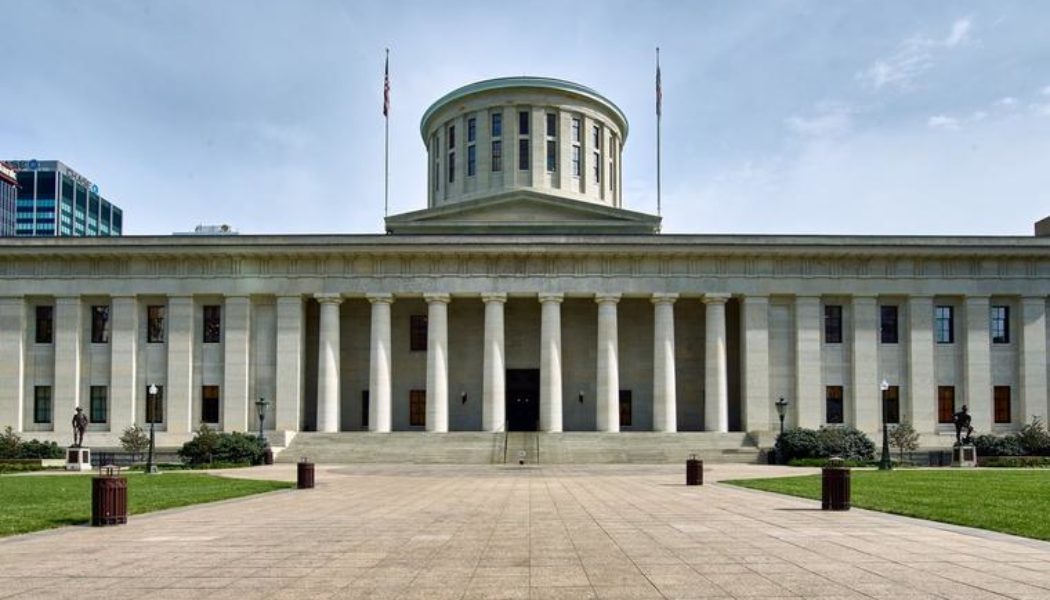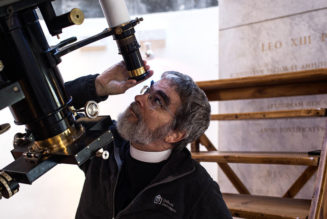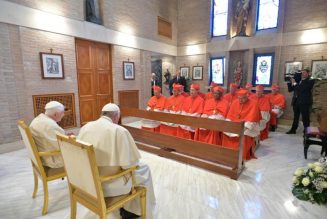
Ohio is the most recent battleground in abortion groups’ ongoing efforts to add nearly unlimited abortion access to state constitutions.
As pro-life battles have largely shifted to the states a little over a year out from the overturning of Roe v. Wade, the latest showdown will be in Ohio, where abortion groups are pushing an amendment to the state Constitution that would ensure virtually unlimited access to abortion.
The groups behind the amendment include Planned Parenthood and the American Civil Liberties Union (ACLU), which are coming off successes they had in the 2022 midterm elections in adding language ensuring abortion access to the state Constitutions of California, Michigan and Vermont.
The amendment would add language to the Ohio Constitution, stating that “every individual has a right to make and carry out one’s own reproductive decisions, including but not limited to decisions on contraception, fertility treatment, continuing one’s own pregnancy, miscarriage care, and abortion.”
Protect Women Ohio, a coalition of more than 50 pro-life and faith-based organizations, including Ohio Right to Life and the Ohio Catholic Conference, has been fighting the amendment with warnings that it would allow late-term abortions, take away parental rights, and eliminate health and safety requirements.
While the amendment states that “abortion may be prohibited after fetal viability,” it also specifies that “in no case may such an abortion be prohibited if in the professional judgment of the pregnant patient’s treating physician it is necessary to protect the pregnant patient’s life or health.”
Peter Range, CEO of Ohio Right to Life, noted that the language of “health,” where abortion past viability is permitted, is a broad definition from the 1973 Supreme Court decision Doe v. Bolton, which includes “all factors, physical, emotional, psychological, familial, and the women’s age relevant to the well-being of the mother.”
Michelle Duffey, communications director at the Ohio Catholic Conference, told the Register that while its proponents use the language of taking the state back to the status under Roe, the amendment “actually goes dangerously beyond Roe” by allowing for late-term abortions and “also removing the parental rights and potentially removing a lot of those safety regulations and putting women at risk of abuse.”
Anti-Parent Agenda
Amy Natoce, press secretary for Protect Women Ohio, said that the amendment’s language of an individual’s right to “reproductive decisions” without specifying an age would “completely wipe out parental consent and notification requirements in Ohio so that minors can obtain abortions and even sex-change procedures without parental consent and notification.”
Range told the Register that one of the groups behind the amendment, Urge, states on its website that it is working to “end forced parental-involvement laws” on the abortion issue. He highlighted Planned Parenthood and the ACLU’s argument in court cases in Indiana and Alaska that parental-consent laws created “an unconstitutional undue burden on unemancipated minors.”
Range said it was clear from these public stances from the groups behind the amendment that they have “a targeted agenda to separate parents from their kids on these incredibly important decisions that kids could be making.”
The amendment’s covering of “reproductive decisions, including but not limited to” abortion, he added, is broad enough to include gender-transition surgeries. A legal analysis of the amendment from Carrie Severino and Frank Scaturro of the Judicial Crisis Network in National Review said “a natural reading” of that part of the amendment “would extend to any medical procedure that involves the human reproductive system, including sex-change surgery.”
The amendment also stipulates that the state government “shall not, directly or indirectly, burden, penalize, prohibit, interfere with, or discriminate against either an individual’s voluntary exercise of this right or a person or entity that assists an individual exercising this right, unless the State demonstrates that it is using the least restrictive means to advance the individual’s health in accordance with widely accepted and evidence-based standards of care.”
Natoce said the way this part of the amendment is worded is dangerous because it could enable predatory behavior and coerced abortions with its broad protection for individuals who assist in obtaining abortions. The Ohio Catholic Conference also listed that as a primary concern, citing a recent study, which found that the “majority of women who have had an abortion report ‘high levels of pressure’ to seek the abortion” and under the language of the amendment, “anyone who transports, counsels, or pressures a woman into an abortion, including abusers, traffickers, and negligent clinicians, would be protected by law.”
Natoce also raised concerns about the amendment eliminating the state’s existing laws if they are deemed a “burden” to abortion access, including its limit on abortion to 22 weeks, parental-consent requirements, and its abortion provider health and safety standards.
In response to a question about parental-consent laws, ACLU of Ohio attorney Jesse Hill said in February, “when you pass a constitutional amendment, it doesn’t just automatically erase everything and start over. But it would mean that laws that conflict with it cannot be enforced, should not be enforced.”
The amendment’s proponents have collected more than 700,000 signatures, considerably more than the required 413,000 signatures to get the issue on the ballot in November. Local officials were scheduled to determine how many of those signatures were valid by July 20 to see if it could appear on the November ballot; but prior to that, there is a potentially game-changing August special election that could raise the amount of votes needed to pass any amendment to the state Constitution. Republican legislators have placed Issue One on the August ballot, a vote on raising the majority needed to amend the state Constitution from its current 50%-plus-one majority, which has been in place for more than 100 years, to 60%.
Ohio Senate President Matt Huffman, R-Lima, is among the state lawmakers advocating the move to require a larger majority of votes to amend the state Constitution. He told the Register that, in the past 20 years, Ohio has gone from being a more divided state politically to more Republican, and outside groups “who do not like what is happening in the legislature or in the executive branch have decided, ‘we’ll just go try to change the Constitution instead.’”
“We have folks who make a lot of money performing abortions, like Planned Parenthood; that’s why they want that enshrined,” he said, but he added that the issue is not only about abortion and referenced the 2009 amendment to the state Constitution, which authorized casinos to come in, as well as more recent efforts to legalize marijuana in the state Constitution.
Regarding the abortion amendment, he said that as information spreads about what it would mean for parental rights and late-term abortion, he thinks Ohioans will reject it. “I think there’s a chance they could get an excess of 50%,” he said. “It won’t get an excess of 60%, which is why it’s important to vote ‘Yes’ on Aug. 8.”
Outside Interest Groups
Natoce said that raising the threshold will “protect the [state] Constitution from these out-of-state special interest groups like the ACLU that so often try to come into our state with this outside money and buy their way into the [Ohio] Constitution.” She added that the August special election “will certainly have a bearing on what happens in November.”
She pointed out that just 18 states allow citizen-initiated constitutional amendments and, of those, several states require larger majorities for their passage, including a 60% requirement in Florida, a 55% requirement in Colorado, and a 66% requirement in New Hampshire.
While the vote on the amendment regarding abortion will be affected by the August election, she said that what the election “is really about is protecting Ohio’s Constitution from outside groups. This is not a new phenomenon of outside groups coming into the state and coming in with their truckloads of money and trying to circumvent the legislative process and buy their way into the [Ohio] Constitution.”
Some former Ohio GOP governors and attorneys general who are opposed to the amendment have voiced concerns about such a significant vote taking place in an August election, which typically sees lower turnout. Republican Secretary of State Frank LaRose believes the advertisements and press coverage of the issue will drive up turnout.
Range said that Ohio Right to Life is supporting a “Yes” vote on raising the threshold because “we just recognize that Ohio’s Constitution is an incredibly important document, and it needs to be protected,” and “it’s not protected right now.”
Duffey said the bishops are neutral on the issue of raising the threshold to amend the state Constitution, referencing their statement that they “do not have a position on Issue 1, as it does not have moral content. However, as ‘responsible citizenship is a virtue, and participation in political life is a moral obligation’ (‘Faithful Citizenship,’ No. 13), the bishops urge Catholics in Ohio to register and vote in the special election.”
Clarke Forsythe, legal counsel at Americans United for Life, told the Register that raising the majority required to amend the state’s Constitution makes sense, as “supermajority measures are throughout state constitutions and the federal Constitution.”
The abortion amendment in nearby Michigan passed with just under 57% of the vote, which is under the proposed 60% higher threshold in the August election, but pro-lifers in Ohio say, regardless of what happens in August, they are hopeful about their chances in November.
One thing Natoce said sets apart the efforts in Ohio is that Protect Women Ohio “came out of the gate early with advertisements to define the issue.” When the ACLU and other groups began collecting signatures in mid-March for the initiative, Protect Women Ohio responded with a $5-million ad buy and door-to-door canvassers, talking to voters to “let Ohioans know that this goes directly after their rights as parents and goes directly after the unborn, stripping away all protections.”
Duffey believes the situation in Ohio is very different from Michigan, where the timing of the leak of the Dobbs decision overturning Roe put pro-lifers “in an even more defensive state from the beginning.”
‘A Spiritual Battle’
Come November, Ohio will serve as the latest test on the issue since the disappointing 2022 midterm outcomes for pro-lifers on state ballot initiatives. Many will be watching its outcome closely, as abortion advocates plan similar efforts to add abortion to state constitutions in 11 states in 2024, including Florida, South Dakota and Missouri.
Forsythe anticipated that “any state that has a ballot-initiative procedure, it’s a reasonable possibility; abortion advocates could run an initiative in the state if they think they can make it on the ballot.”
Ohio Right to Life’s Range views the amendment efforts in Ohio as part of “a much larger battle” taking place “across the country for parental rights to ensure that parents have a say in their kids’ decisions” and “for life, whether or not a child will be able to breathe the common air, to have a chance at life.”
He viewed this as “fundamentally a spiritual battle” and encouraged people of faith to pray for the success of the pro-life side in these battles, expressing gratitude for the prayers of the Ohio bishops.
Ohio’s bishops also have been encouraging the faithful to pray and fast against this amendment. Part of that has included handing out prayer cards in parishes across the dioceses, with a “Prayer for Ohio” on the back that has a special appeal for the intercession of Mary and Joseph, who “welcomed Jesus into our broken world” to “help us build a civilization of love by upholding the sacredness of life, preserving parental rights, and accompanying pregnant women in need.”





![Is single parenthood the problem? If so, should the government try to fix it? [Note: The Atlantic paywall]…](https://salvationprosperity.net/wp-content/uploads/2023/09/is-single-parenthood-the-problem-if-so-should-the-government-try-to-fix-it-note-the-atlantic-paywall-327x219.jpg)



